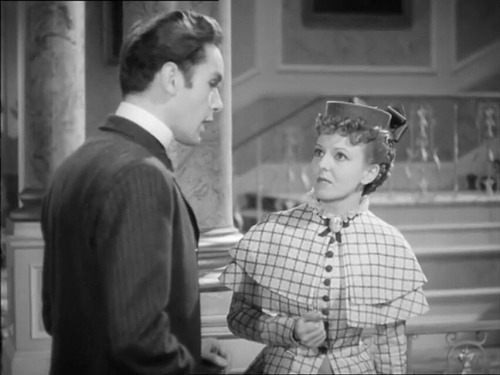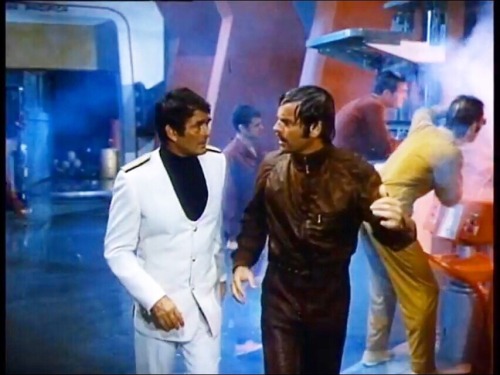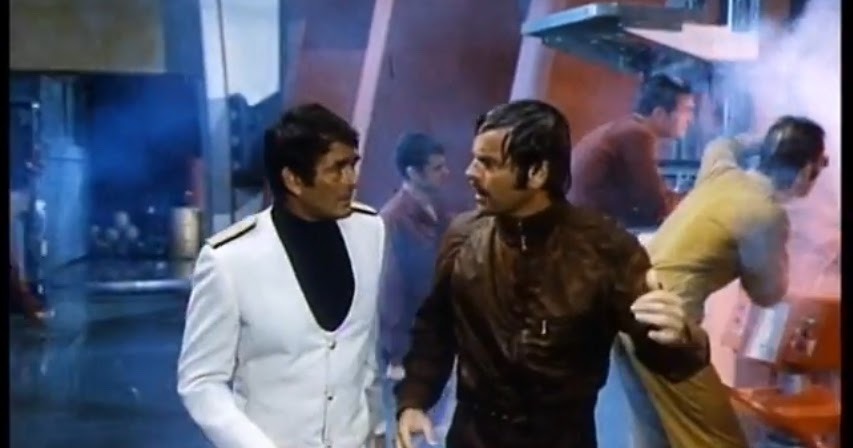
Slob with a blog. Vicariously join me on my movie viewing adventures! Visit my blog here: http://jinglebonesmovietime.blogspot.com
297 posts
YOUNG MANS FANCY (Robert Stevenson, 1939).

YOUNG MAN’S FANCY (Robert Stevenson, 1939).
Young Man’s Fancy is a very early comedy from the Ealing Studios. Released in what was producer Michael Balcon’s second year as studio head, the movie has few of the hallmarks later associated with Ealing.
Griffith Jones stars as aristocrat Lord Albarn who is to be wed to a brewery heiress. Unhappy with the marriage of convenience he rebels, visiting a music hall and falling for human cannonball Ada (Anna Lee).
Ada agrees to help Albarn out of the forthcoming wedding but soon the pair are caught up in the Siege of Paris and the events of the Franco-Prussian War.
Such an odd dramatic turn in an otherwise frothy rom-com is slightly jarring but don’t let that put you off of this surprisingly entertaining movie. Not only are there plenty of laughs but it also has a social conscious rare in 1930s British cinema outside of the Documentary Movement.
The talented Robot Stevenson only directed three films at Ealing before decamping to Hollywood where he gained critical and commercial success with Jane Eyre (1943). Late in his career he worked almost exclusively for Walt Disney Productions where he was responsible for number of excellent family drama and fantasy films including Old Yeller (1957) and Mary Poppins (1964). Young Man’s Fancy is probably the best of Stevenson’s Ealing output, a somewhat frivolous but enjoyable ‘B’ picture from his and the studio’s formative years.
Check out my blog jinglebonesmovietime.blogspot.com for more reviews of vintage Ealing Studios classics!
-
 thegoldenageofrocknroll liked this · 6 years ago
thegoldenageofrocknroll liked this · 6 years ago
More Posts from Jingle-bones

Movie number 74: The Gilded Cage (Dir: John Gilling, 1955).
There are shades of The Maltese Falcon (John Huston, 1941) to this low budget British thriller set in the murky underworld of art forgery.
The film stars Alex Nicol and Michael Alexander as brothers embroiled in murder and an attempted art heist. Punch-ups ensue as the pair endeavour to solve the crime and clear their name.
The Gilded Cage is a decent enough crime thriller from the era of the second feature; solidly, if a mite unimaginatively, directed by John Gilling, who would later direct some noteworthy movies for Hammer Film Productions including Plague of the Zombies (1966) and The Reptile (1966).
With American actors in the lead and a mix of mid-Atlantic accents throughout, presumably in an attempt to appeal to US audiences, its hoped for ‘hard-boiled’ style is a little underdone. It does benefit from use of the actual London locations on which it is set, including Tower Bridge with its pre-Jubilee paint job and a fascinating but all too brief glimpse of St Katherine Docks when it was still a working dock.
The Gilded Cage is no masterpiece but it is a well paced, entertaining flick. Worth a watch, especially for fans of vintage British cinema.
Originally produced by Tempean Films, it would presumably have fallen into obscurity were it not for film archivists Renown Pictures and their dedication to preserving such overlooked works which collectively form an important part of Britain film history.
Read this review and more on my new blog: jinglebonesmovietime.blogspot.com

DINOSAUR (Dir: Ralph Zondag & Eric Leighton, 2000).
Travel back 65 million years in Walt Disney Pictures' visually stunning Dinosaur.
Iguanodon Aladar, separated from his mother while still an egg, is adopted by a family of lemurs and raised in the lush tropical surrounds of Lemur Island. When a devastating meteor shower hits, the ensuing deadly dust cloud forces the family to leave their now barren home. Joining a herd of dinos heading for the Nesting Ground, Aladar clashes with group leader Kron whilst catching the eye of his sister Neera. A dino romance ensues, but drought, rockslides and a pair of hungry Carnotaurus threatens the perilous mission at every turn.
With its real life filmed backdrops and detailed CGI dinosaurs, the movie looks beautiful. Yet, this groundbreaking approach to filming is undermined by a pretty pedestrian screenplay which is marred by some unfortunate glib, facile dialogue.
It is perhaps best not to dwell on the story and screenplay elements of Dinosaur, after all its writers didn't. Anyone above the age of 7 is clearly here for the spectacular visuals. This was the first time Disney had utilised CGI on such an elaborate scale in one of its own non-Pixar movies. While computer graphics have undoubtedly been refined in the two decades since its release, the visuals are still mightily impressive. Its most spectacular set-pieces include the meteor storm, the Carnotaurus attack and an opening, following the journey of Aladar's egg from nest to Lemur island, which the studio used as the film's trailer, such was their belief in the strength of the animation.
Dinosaur was a hit with cinema audiences, but not on the scale the studio had hoped. A better script would have undoubtedly elevated it above the status of matinee popcorn fodder; its visuals belonging to an epic on a much grander scale than dialogue and plot suggest. None the less, Dinosaur is a highly entertaining movie, both for dino obsessed kids and grown-ups who are willing to overlook its shortcomings to enjoy the awesome visuals.
Read an unedited version of this review and reviews of other Disney classics on my new blog: jinglebonesmovietime.blogspot.com

Movie number 67: City Beneath the Sea (Irwin Allen, 1971)
Originally made for US TV, City Beneath the Sea is an underwater sci-fi adventure from producer/director Irwin Allen, initially pitched as a weekly TV series in 1969. At first unsuccessful, Irwin was able to secure support for a TV movie based upon the idea and City Beneath the Sea duly premiered on the NBC network in January 1971, fulfilling its duel purpose as both a 'Movie of the Week' and as a pilot for a proposed series.
Set in the year 2053, City Beneath the Sea stars Stuart Whitman as commander of underwater city Pacifica. As storage for both the US gold reserve and the valuable yet highly unstable explosive H128, Pacifica is the target of an inside robbery from certain unsavory officials. However, this problem pales in significance to the imminent threat posed by an asteroid (or rather 'planetoid') on a direct collision course with the sub-aquatic metropolis!
A fairly impressive cast was assembled for the movie; joining the likeable, square-jawed Whitman are TV regulars Robert Wagner and Richard Basehart. A little extra cachet is added by blink-and-you-miss-them cameos from Joseph Cotton and boxer Sugar Ray Robinson. Of course it betrays its TV origins; the effects, largely utilising model work, are obvious but appealingly and in no way detract from ones enjoyment of the film. The colourful set design and costumes exhibit a nice 1970's futurist chic. Where the movie fails is in its narrative. The premise, while inherently silly, is a fairly strong one. But the screenplay, by John Meredyth Lucas, suffers from too much exposition and too little action. This, perhaps more than anything, sealed the fate of the property as NBC did not commission any further episodes. It did, however, secure release in UK cinemas retitled One Hour to Doomsday.
Over time City Beneath the Sea has attained a significant and deserved cult following and remains an entertaining kitsch treat, especially for fans of vintage TV sci-fi and of the Allen oeuvre in particular.
Visit my blog JINGLE BONES MOVIE TIME to read a longer, more in-depth review of CITY BENEATH THE SEA! Link below.


Movie number 58: The Long Arm aka The Third Key (Charles Frend, 1956).
The final movie shot at Ealing Studios before production shifted to the MGM British Studios. The Long Arm, retitled The Third Key in the US, stars Jack Hawkins as phlegmatic detective superintendent Tom Halliday, busy pursuing a safecracker while neglecting his family.
Charles Frend directs in a somewhat low-key documentary style which recalls earlier Ealing police drama The Blue Lamp (Basil Dearden, 1950). The attempted realistic portrayal of unglamorous, often mundane police work results in a movie which is less a thriller and more a police procedural drama.
Hawkins is as dependable as ever in the lead and the film benefits from its use of real life locations, in particular an exciting climax at the Royal Festival Hall.
While not quite as satisfying a movie as the classic The Blue Lamp, The Long Arm is still a neat little drama; notable for both its place in British film history and its considerable entertainment value.

My apologies for the hiatus in posting new reviews. I hope to be back on track tomorrow with brand new content! In the meantime check out all of my previous reviews in my new blog: JINGLE BONES MOVIE TIME! Link below.